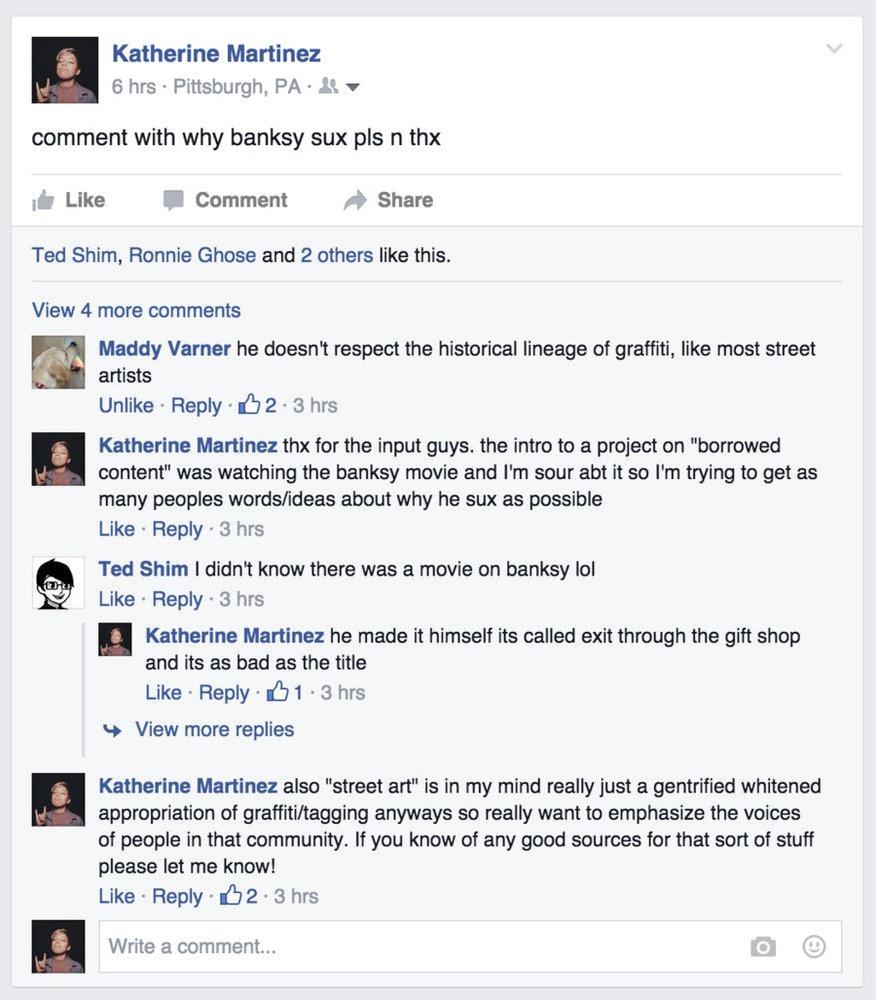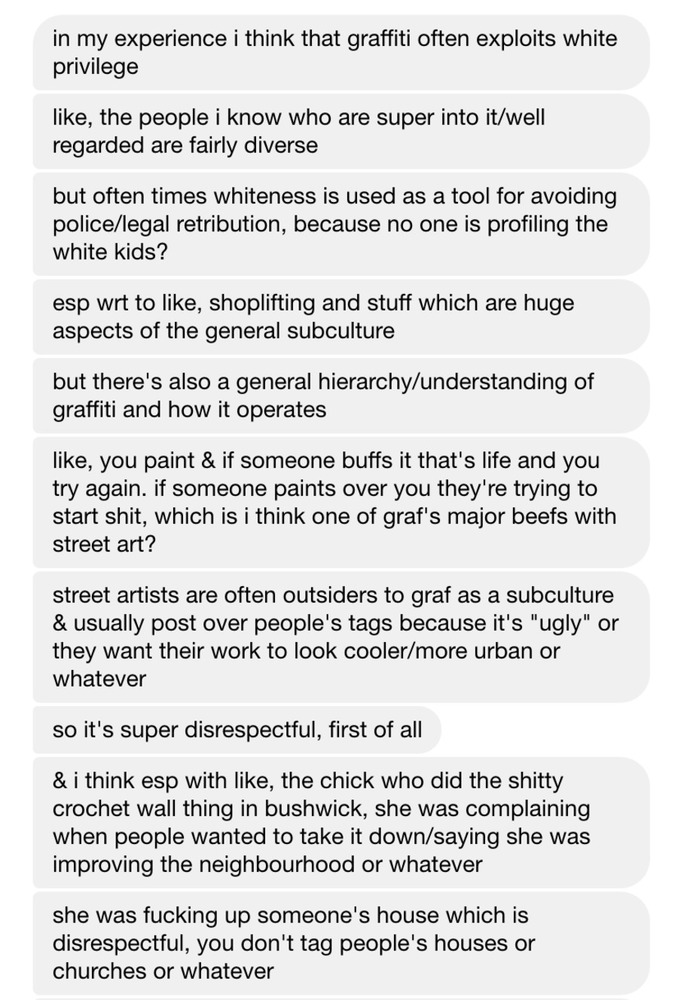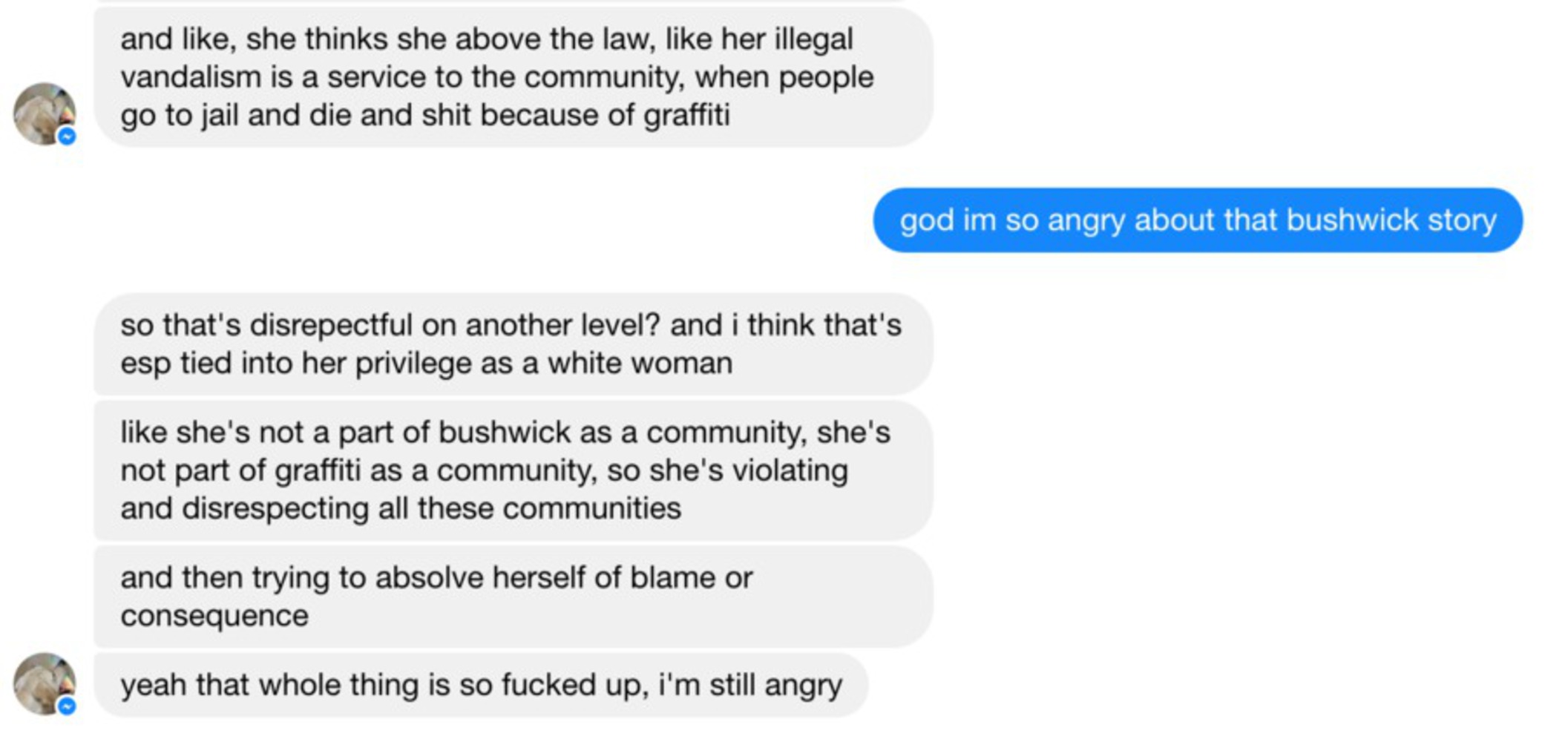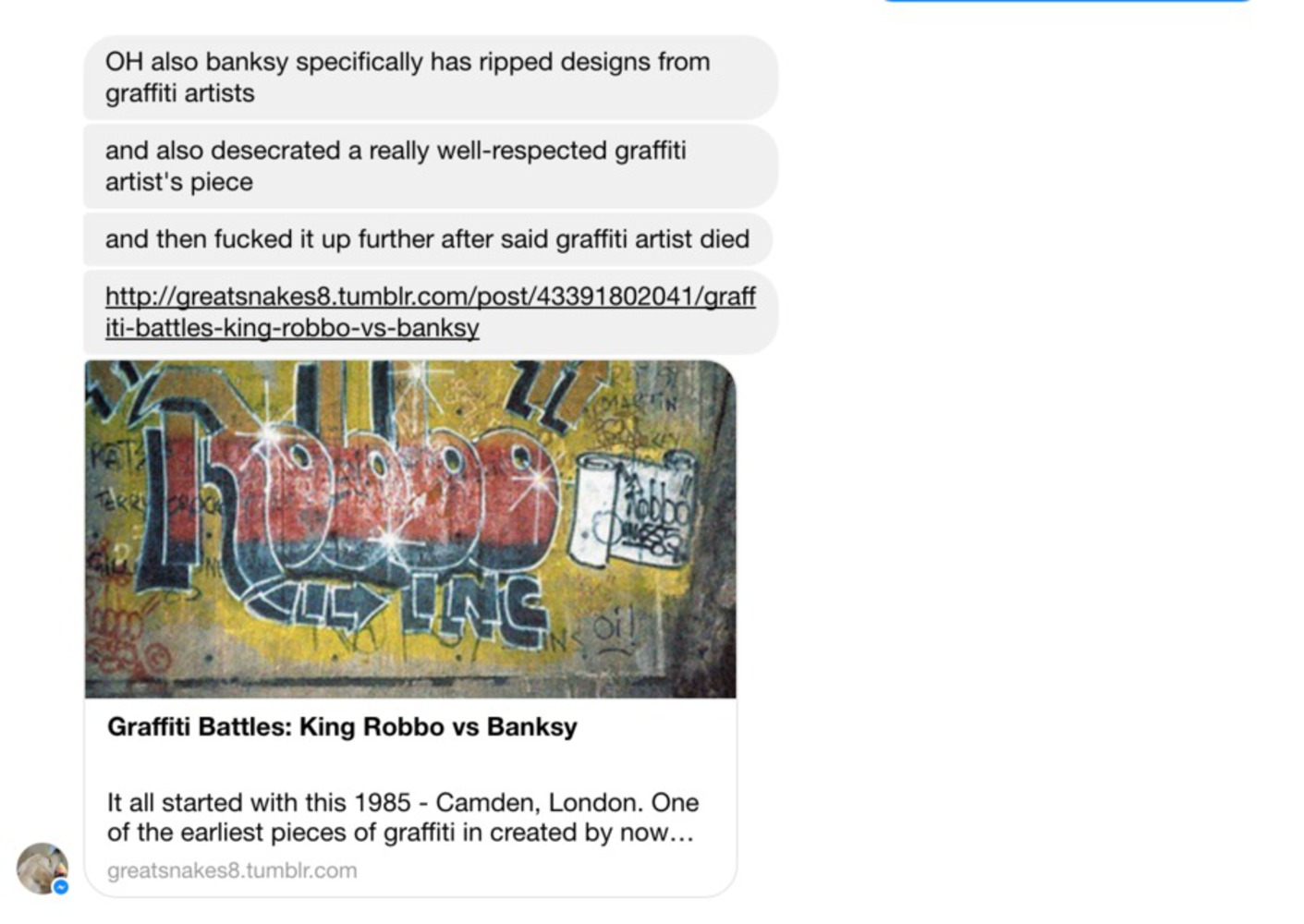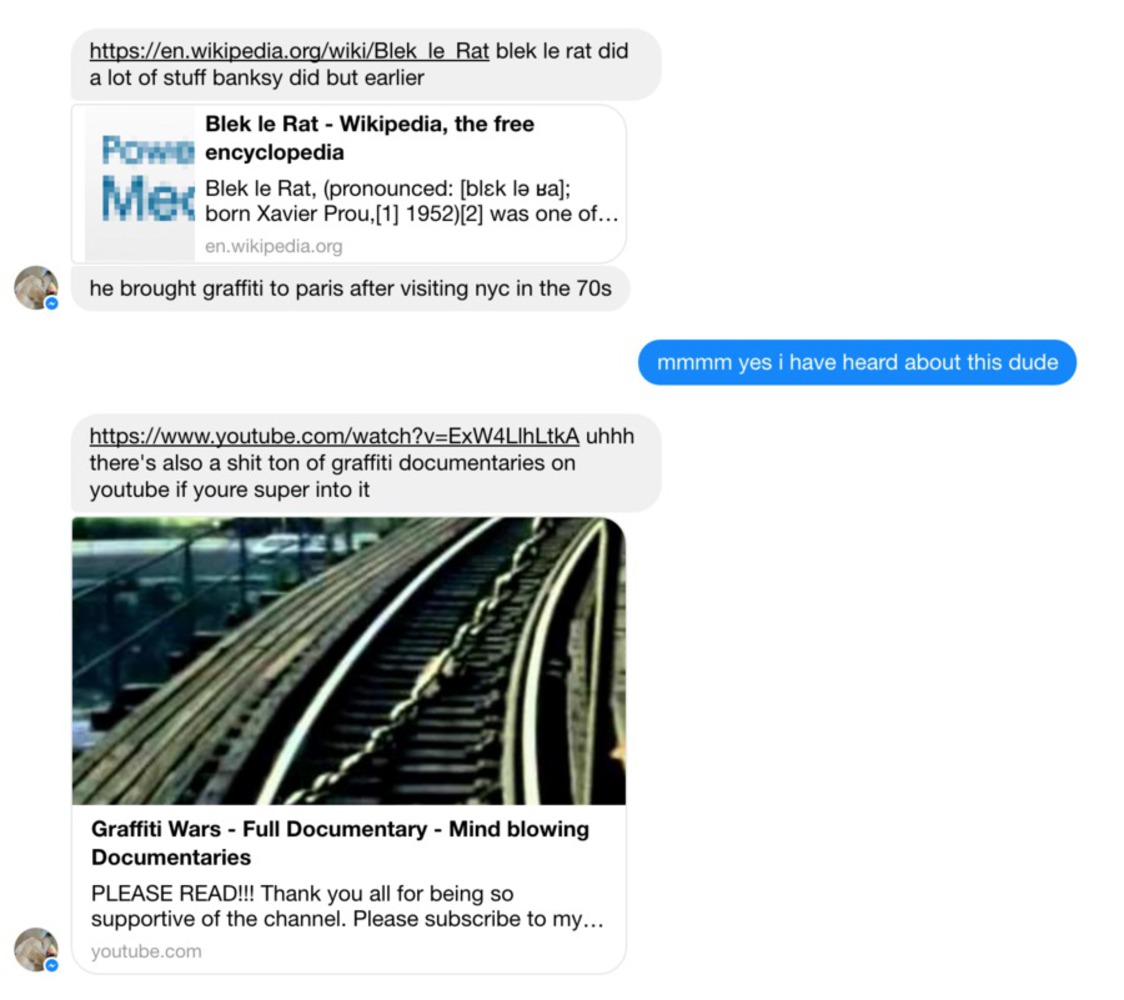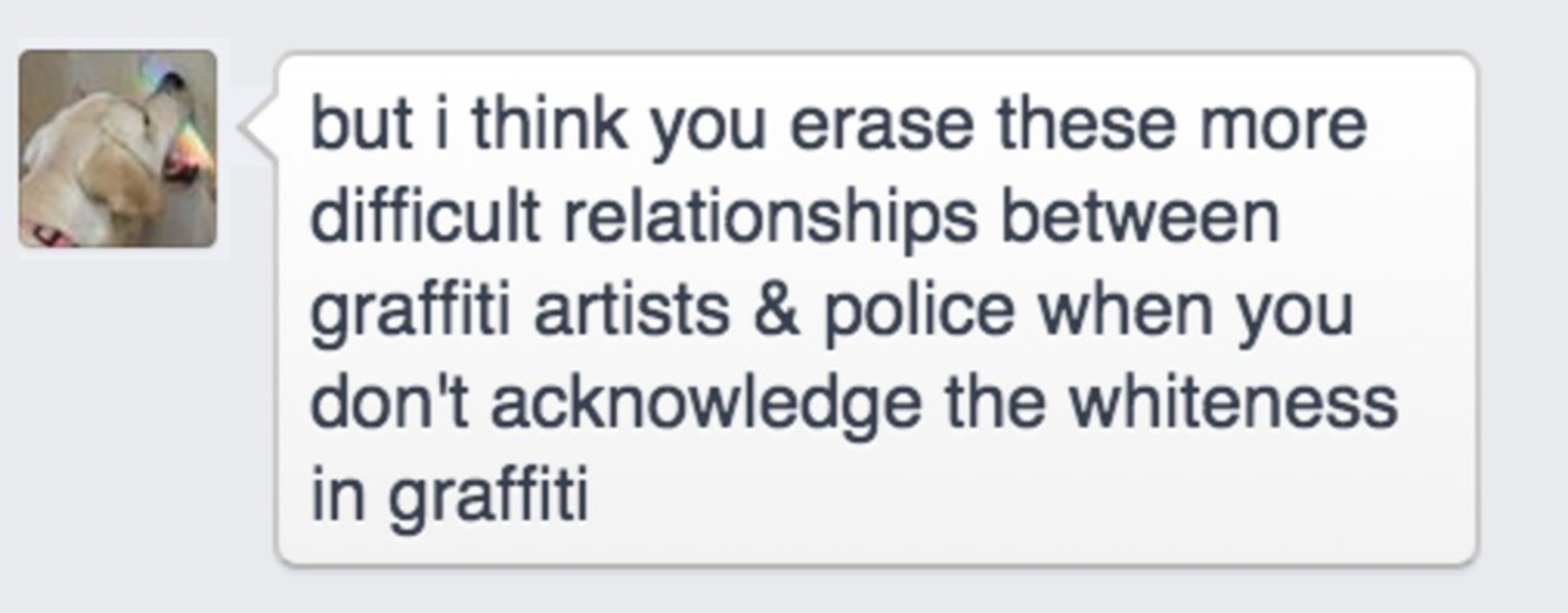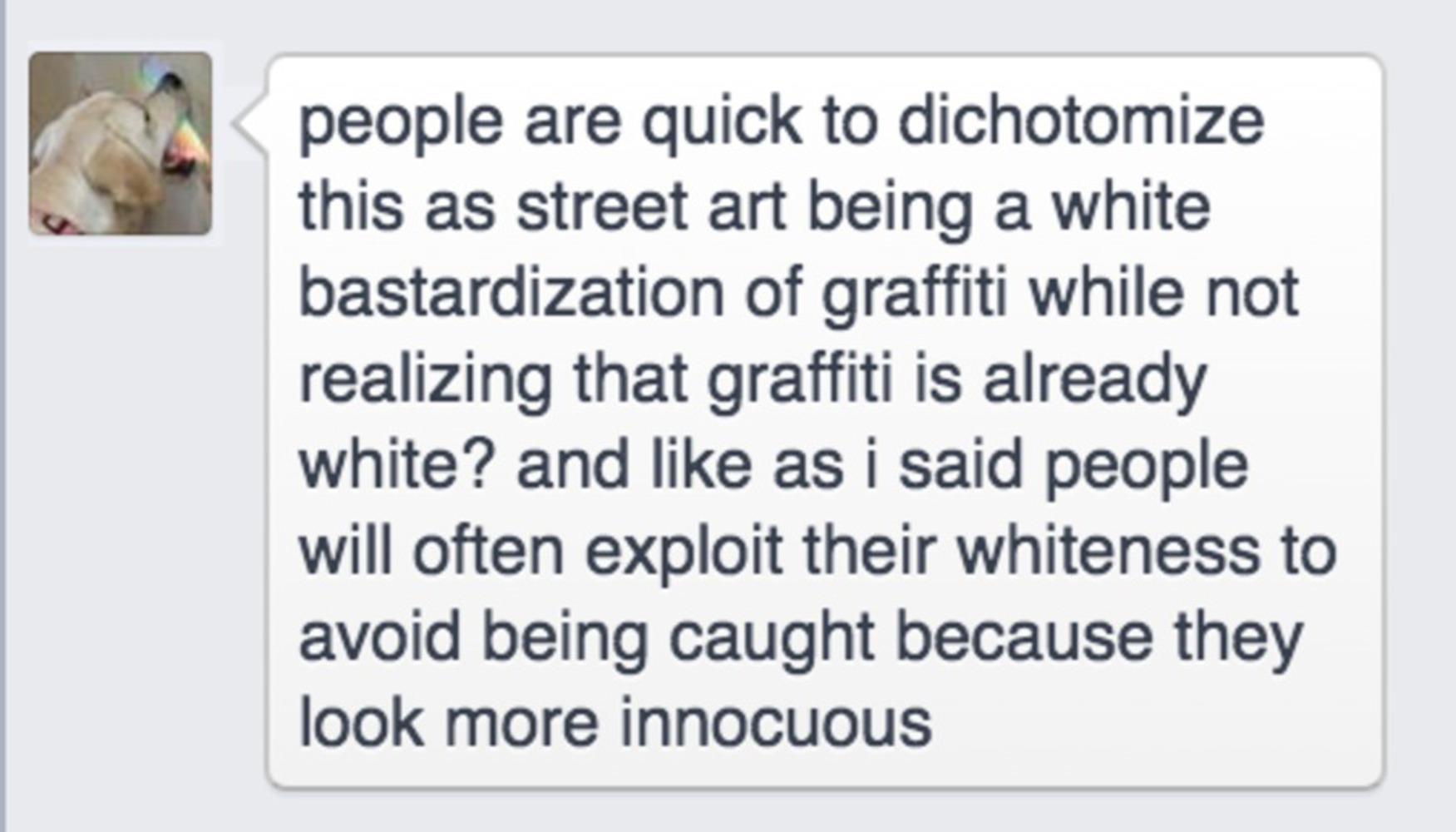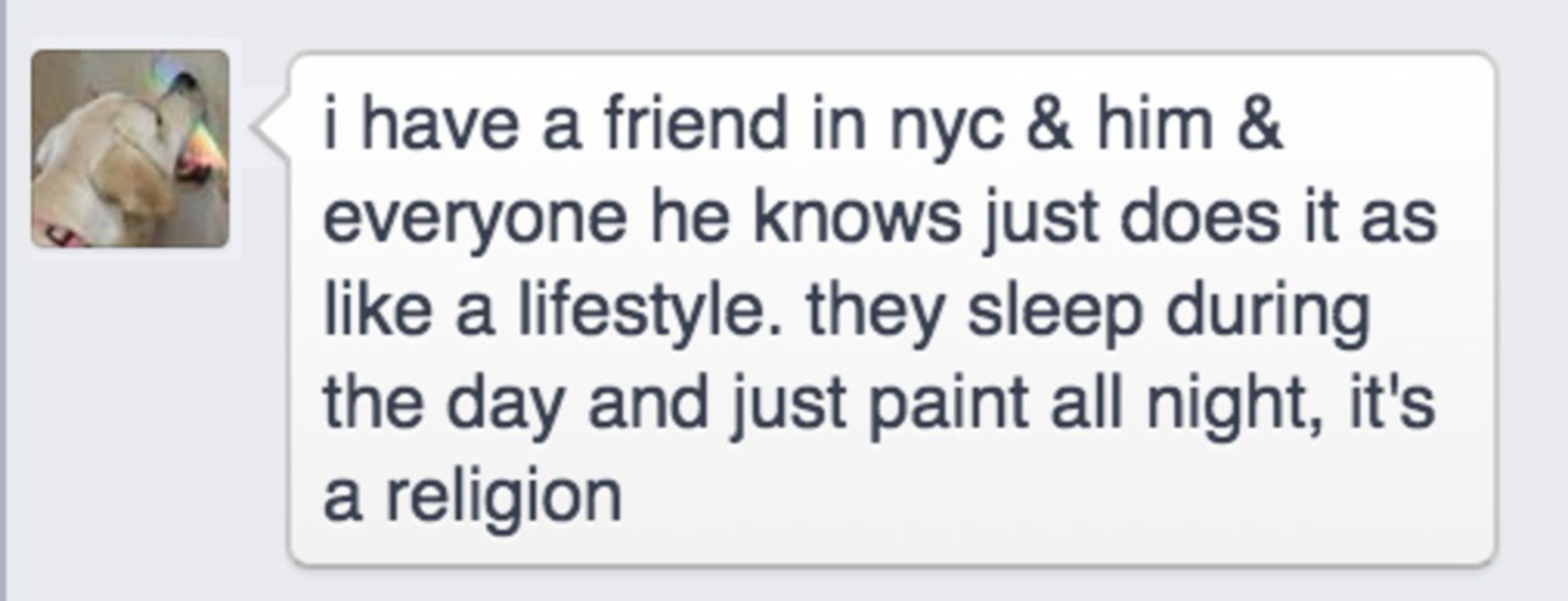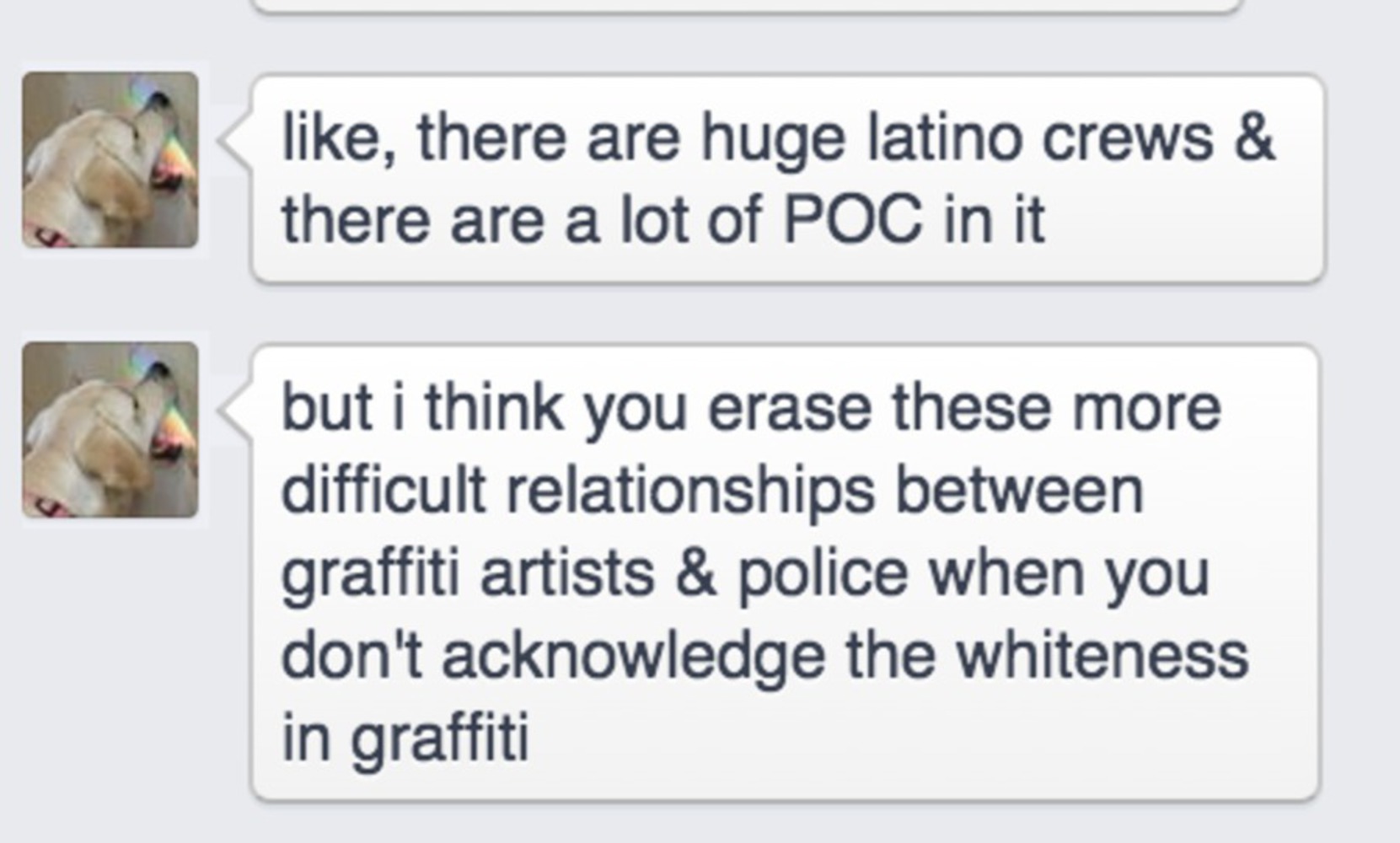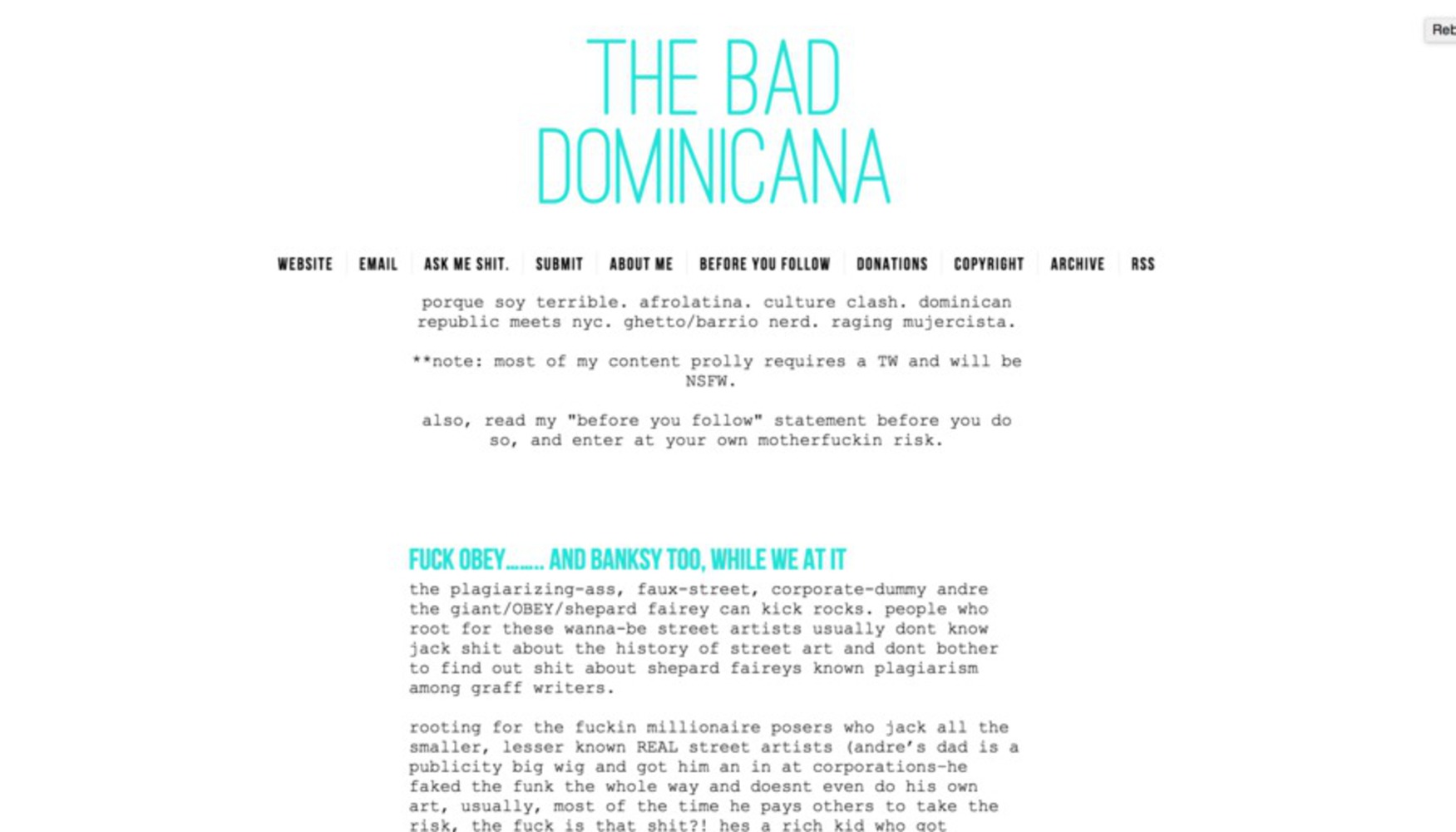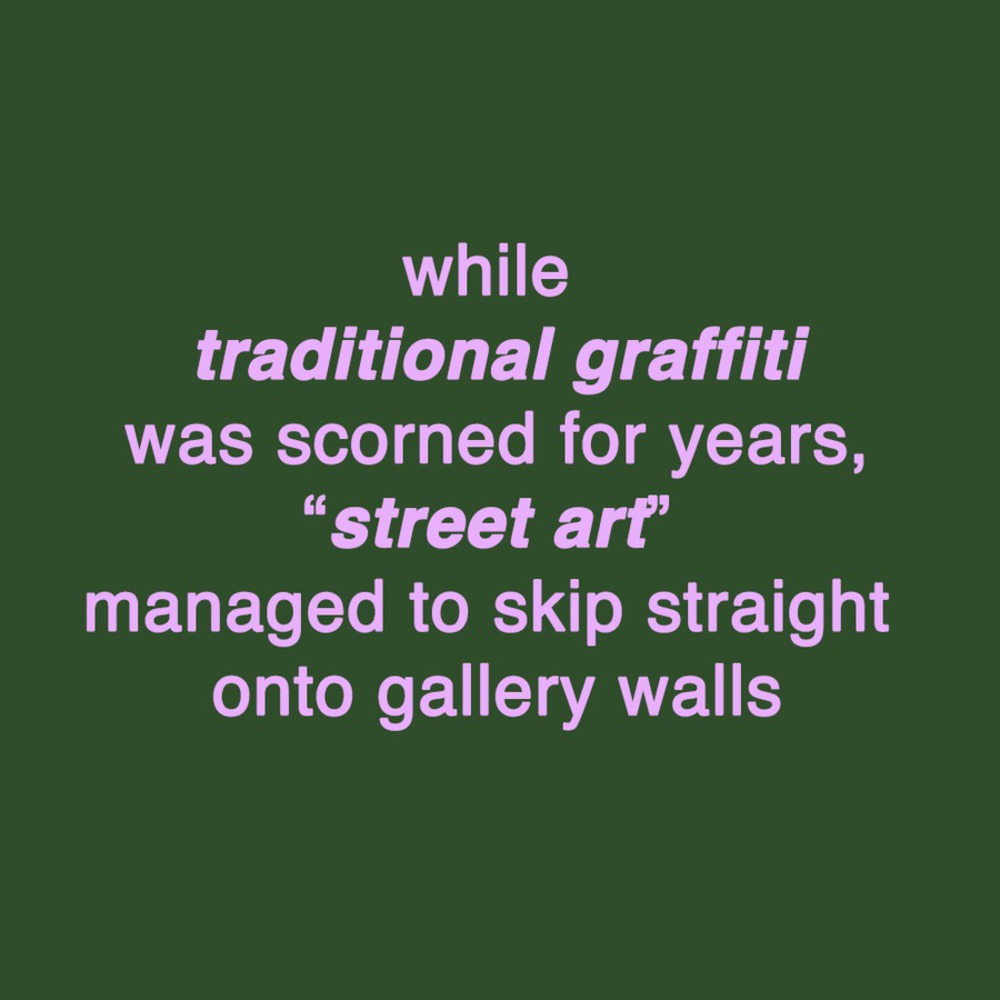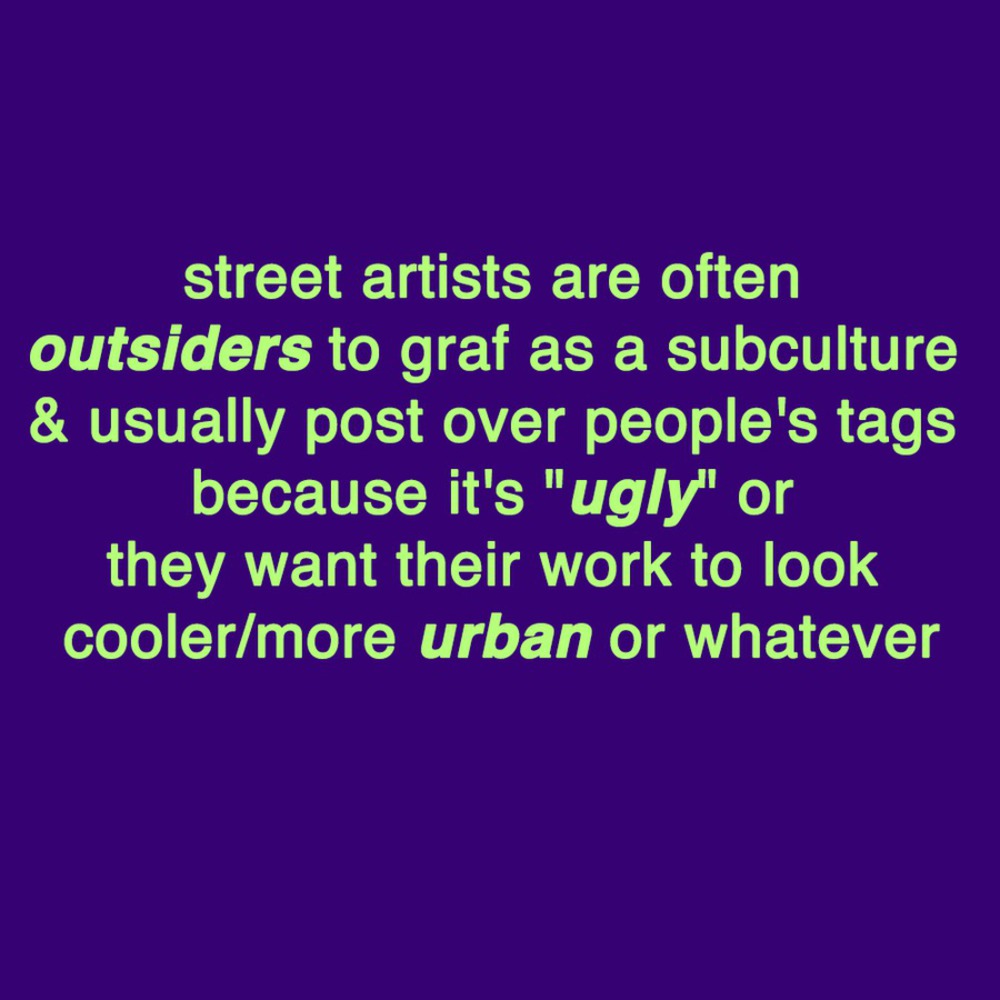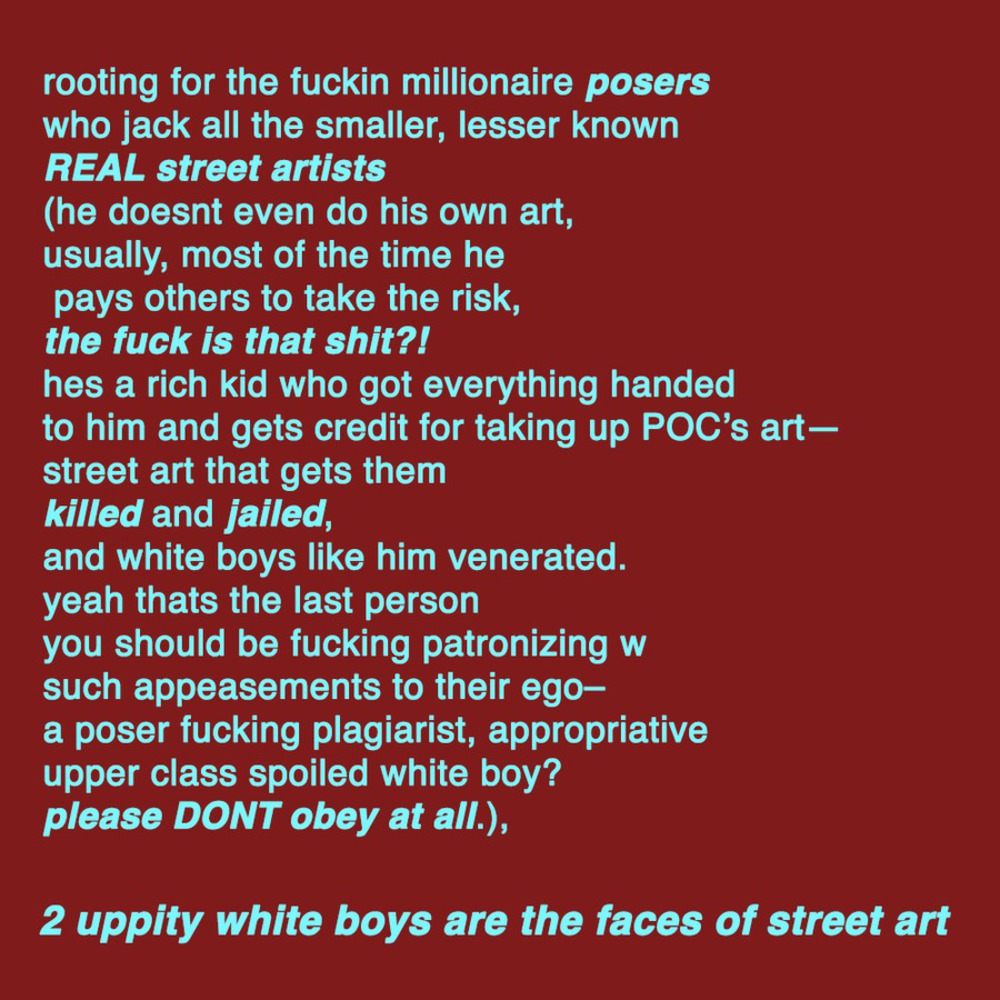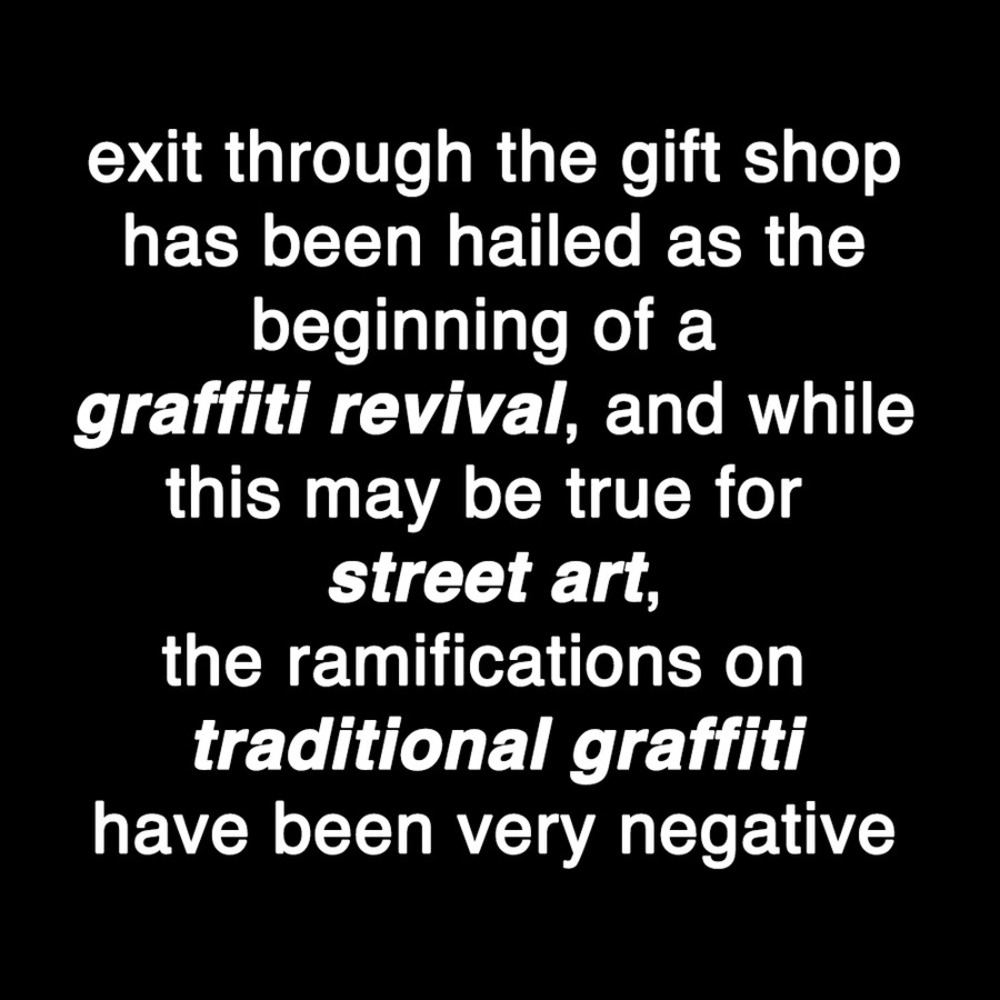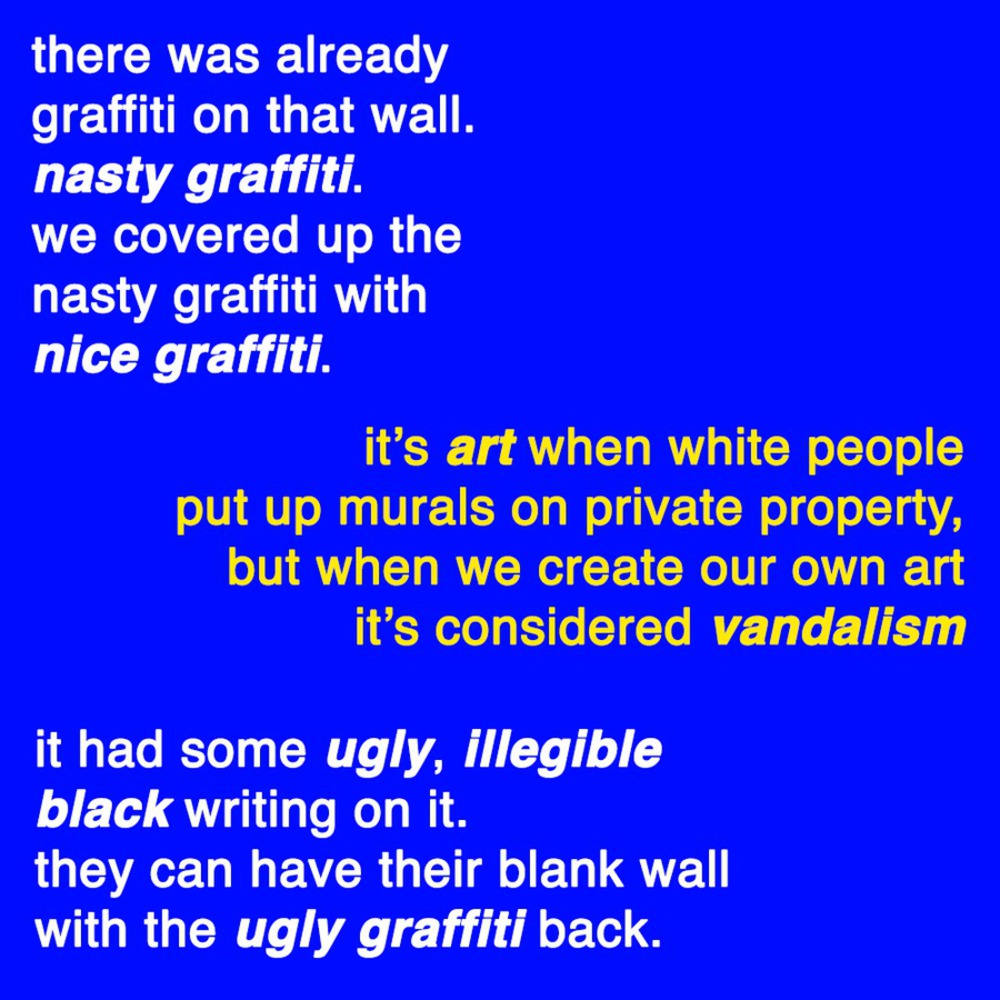Full disclosure: on principle, I don't like most street art. It's not that I don't think it's "real art" or don't get it. I think the messages they try to convey rely on tired, boring sarcasm and don't contribute anything useful or meaningful to conversations about politics, economics, or social issues. As Dan Brooks said a few weeks ago in the NY Times, "sarcasm is our kitsch" and more often than not, street artists are the worst perpetuators of it. Regardless, a more important thing to note is the way that street art has been widely embraced by the art world. It's no secret that the art world has taken a long time to pull together even a half-hearted attempt to not seem racist and sexist (*see anything by the Guerilla Girls, who spoke out about such issues long before Banksy came onto the scene). Graffiti is the original street art, but it's generally percieved as something done by mostly poor people of color. Despite this not being the case, the art world has never approached it, but once white street artists gained visibility, they were able to sell their work for thousands of dollars.
I wanted to focus particularly on the detrimental effects that the popularization of street art has had on people of color, even those who are not involved in the graf scene at all. It's important to note that the people in graf span both class and racial lines, but because of it's perception it is criminalized, whereas street art's illegality is acknowledged, but never followed up on. A few quick google searches, plus some discussion with friends gave me the start I needed. Taking a cue from Jenny Holzer, I sought words and perspectives of those involved in or affected by the graf scene and let them do the talking.
On social media, I asked for ideas, content, articles, anything that might have direct quotes from people that were connected to the scene. I found plenty.
